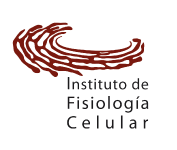Synthesis and characterization of a 13-member macrocycle functionalized by tyramine arms: Complexation with Cu<sup>2+</sup>and antioxidant capacity
López-Martínez, L. M., Santacruz-Ortega, H., Navarro, R. E., Inoue, M., Sugich-Miranda, R., Hernández-Paredes, J., ? Sotelo-Mundo, R. R. (2017). Synthesis and characterization of a 13-member macrocycle functionalized by tyramine arms: Complexation with Cu2+ and antioxidant capacity. Polyhedron, 127, 438?448. doi:10.1016/j.poly.2016.10.028
© 2016 Elsevier Ltd A new macrocycle bearing tyramine arms through amide linkages, 2,2′-(2,9-dioxo-1,4,7,10-tetraazacyclotridecane-4,7-diyl)bis(N-(4-hydroxyphenethyl)acetamide) abbreviated as L13Tyra, has been synthesized with amide-coupling agents in a microwave reactor. This macrocycle involves two potential metal-coordinating and bioactive sites, i.e., the tetraaza-macrocyclic ring (with a low basicity of the amino nitrogen) and the pendant phenol arms (with a small pK a 8.6). The Cu 2+ complex has different compositions in solid and in solution. An X-ray crystal study shows that a mononuclear complex [Cu(L13Tyra – 2H)] 0 is formed with a square coordination of two deprotonated amide nitrogen and two amino nitrogen atoms of the macrocyclic ring; a carbonyl oxygen atom from a pendant arm occupies an axial site to construct a square pyramid. UV–Vis spectrometric titrations in aqueous solutions indicate the formation of a binuclear complex [Cu 2 (L13Tyra – 4H)(H 2 O) x ] 0 in which phenolate oxygen atoms of the tyramine arms coordinate a Cu 2+ ion in addition to the coordination of the macrocyclic chelate; such a binuclear structure is maintained only in solution. The uncoordinated ligand has a high antioxidant capacity with a TEAC (Trolox equivalent antioxidant capacity) assay comparable to that of ascorbic acid, thanks to the phenolic OH of the tyramine arms. Copper(II) ion works as an inhibitor against the activity; the TEAC assay of the binuclear complex is as small as one-twentieth that of the uncoordinated ligand. Antiproliferative and cytotoxic assays with normal and cancer cell lines show no toxicity for both the ligand and its Cu 2+ complex.


